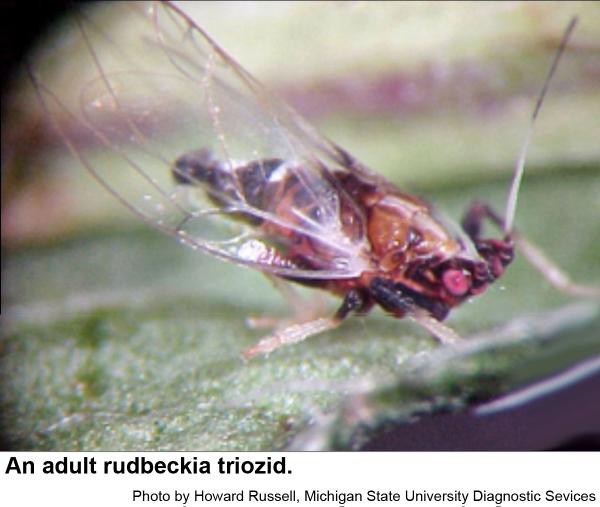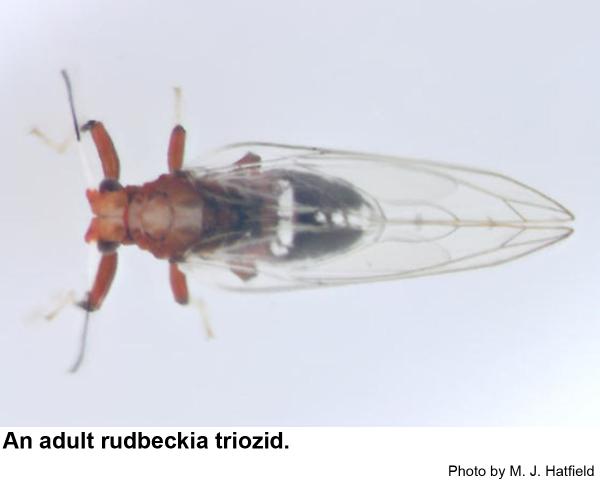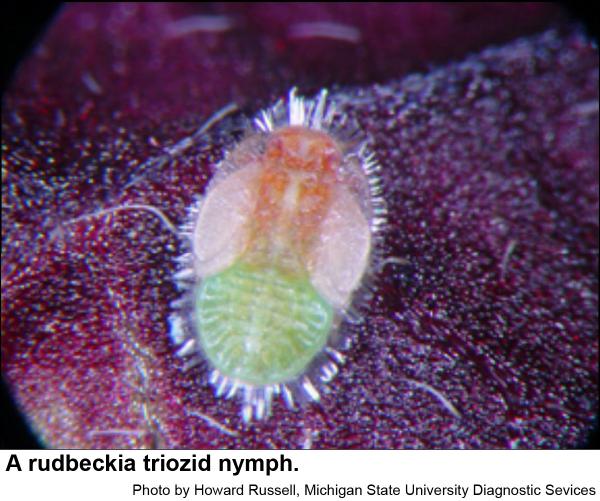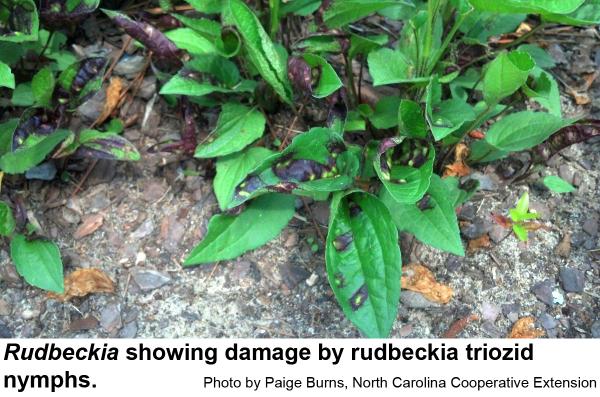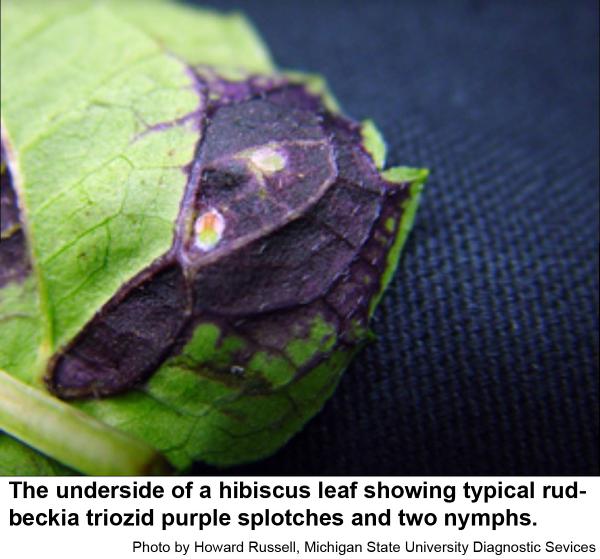Description and Biology
The rudbeckia triozid, Bactericera antennata, is very small (1/8 inch long) with colorless, transparent wings and red eyes. The body is mottled with brown and dark brown patches except for a white line across the base of the abdomen and some white markings toward the tail. The legs are dark at the base and pale toward the feet. Mature nymphs are about 1/8 inch long, flat and have a light green abdomen, red-orange head and thorax, and white wing pads. The eyes are reddish and the body is completely fringed white, waxy filaments. Nymphs insert their needle-like mouthparts into lower surfaces of the leaf and inject their saliva before sucking out the pre-digested plant fluids. Their saliva first causes a shallow depression on the lower leaf surface. Then a deep purple spot develops on both leaf surfaces. However, the top surface of the feeding site may have a green spot in the middle of the purple splotch. The veins may also turn purple over much of the lower leaf surface. It is probable that one generation per year occurs in Michigan. We may have more generations per year here in North Carolina. Rudbeckia triozids probably overwinter as eggs laid in crevices of bark or some other shelted part of a host plant as do other species of triozids.
Host Plants
Coneflowers, black-eyed Susans, and other species of Rudbeckia are all probably host plants. Hibiscus has been reported as a host plant of the rudbeckia triozid as well.
Residential Recommendations
Rudbeckia triozid nymphs are heavily parasitized (over 90 percent) by a very small black and red wasp in Michigan, something that is likely to occur in North Carolina as well. So the population is likely to collapse even if nothing is done. Should there be an overwhelming desire to spray, it is unlikely that the rudbeckia triozid has developed resistance to insecticides. Because the nymphs disrupt leaf tissue so profoundly, systemic insecticides may not work as well. Most insecticides labeled for landscape use found in plant sections of big box stores, nurseries, and garden centers should give more than adequate control as long as the spray is directed upward onto the lower leaf surfaces where the nymphs feed.
Other Resources
- Rudbeckia triozid found on perennial hibiscus. Russell, H. 2010. MSU Diagnostic Services, Department of Plant Pathology.
- Rudbeckia Triozid, ventral - Bactericera antennata. Hatfield, M. J. 2017. BugGuide, Iowa State University Department of Entomology.
- Extension Plant Pathology Publications and Factsheets
- Horticultural Science Publications
- North Carolina Agricultural Chemicals Manual
For assistance with a specific problem, contact your local Cooperative Extension Center.
This Factsheet has not been peer reviewed.
Publication date: March 12, 2019
Reviewed/Revised: Dec. 20, 2023
Recommendations for the use of agricultural chemicals are included in this publication as a convenience to the reader. The use of brand names and any mention or listing of commercial products or services in this publication does not imply endorsement by NC State University or N.C. A&T State University nor discrimination against similar products or services not mentioned. Individuals who use agricultural chemicals are responsible for ensuring that the intended use complies with current regulations and conforms to the product label. Be sure to obtain current information about usage regulations and examine a current product label before applying any chemical. For assistance, contact your local N.C. Cooperative Extension county center.
N.C. Cooperative Extension prohibits discrimination and harassment regardless of age, color, disability, family and marital status, gender identity, national origin, political beliefs, race, religion, sex (including pregnancy), sexual orientation and veteran status.

